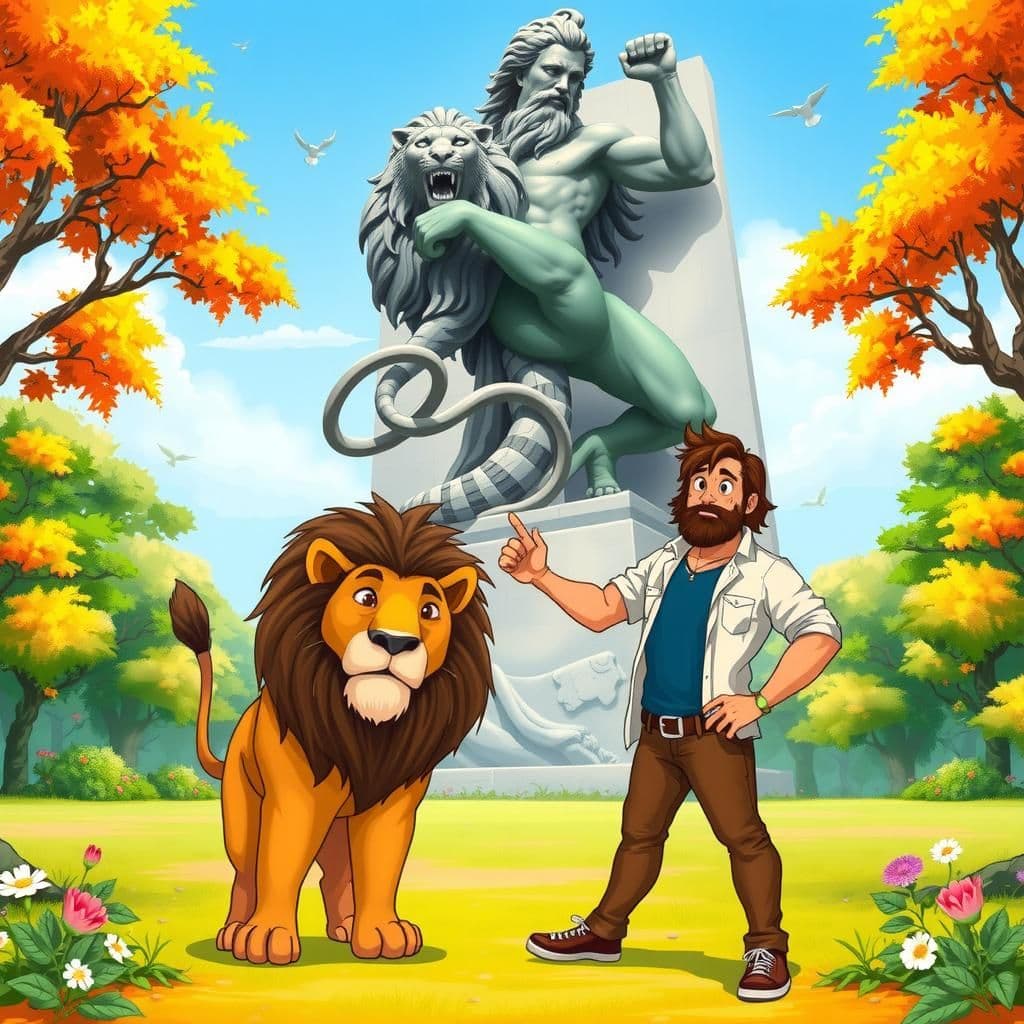The Lion and the Statue

Story Summary
In "The Lion and the Statue," a Man and a Lion engage in a humorous debate over their strengths, with the Man claiming superiority due to human intelligence. To support his argument, he points to a statue of Hercules defeating a Lion; however, the Lion cleverly counters that the statue is biased, created by a man to reflect his perspective. This inspirational short story with moral highlights how representations can be manipulated, reminding us that truth can be subjective in small moral stories.
Click to reveal the moral of the story
The moral of the story is that perspective can distort reality, as representations made by one side may not accurately reflect the truth.
Historical Context
This fable, often attributed to Aesop, reflects the ancient Greek tradition of using allegorical storytelling to convey moral lessons. The dialogue between the Man and the Lion highlights themes of perspective, bias, and the subjective nature of representations, illustrating how human interpretations can distort reality. This story has been retold in various cultures, emphasizing the enduring relevance of its message about the power dynamics between different beings and the importance of questioning established narratives.
Our Editors Opinion
This story highlights the idea that perspectives are often shaped by bias and power dynamics, a concept that is highly relevant in modern life, particularly in media representation and social narratives. For instance, a news outlet may portray a controversial event in a way that aligns with its political stance, leading audiences to accept a skewed version of truth, much like the man's biased depiction of strength in the statue.
You May Also Like

The Wild Ass and the Lion
In "The Wild Ass and the Lion," a Wild Ass and a Lion join forces to hunt in the forest, blending the Lion's strength with the Wild Ass's speed. However, after their successful hunt, the Lion claims the lion's share, asserting his dominance and threatening the Wild Ass, illustrating the life-changing moral that in the animal kingdom, "might makes right." This short and sweet moral story serves as a powerful reminder of how power dynamics shape fairness, making it one of the top 10 moral stories for children.

The Two Dogs
In this concise moral story, a Hound complains to a Housedog about receiving a share of the spoils despite not hunting. The Housedog explains that it is the master's choice to teach him to rely on others, highlighting the lesson that children should not be held accountable for their parents' actions. This easy small story with moral serves as a reminder for class 7 students about fairness and responsibility.

The Writer and the Tramps
In "The Writer and the Tramps," a story that embodies the spirit of heartwarming moral stories, an Ambitious Writer arrogantly dismisses a Tramp's question about his shirt, claiming it symbolizes the genius's unconcern. The Tramp, in a simple yet profound act, carves "John Gump, Champion Genius" into a tree, delivering a life-changing lesson about the contrast between true talent and superficial arrogance. This moral short story reminds us that true genius is often humble and unassuming.
Other names for this story
The Strength of Perception, The Truth Behind the Statue, Man vs. Lion: A Debate, The Power of Interpretation, Statues and Strength, The Lion's Perspective, Illusions of Power, The Art of Argument
Did You Know?
This story highlights the theme of perspective and bias, illustrating how the narratives we create can shape our understanding of strength and dominance, often reflecting human arrogance rather than objective reality. The Lion's response emphasizes that representations can be manipulated to favor one side, revealing the limitations of perceived evidence.
Subscribe to Daily Stories
Get a new moral story in your inbox every day.